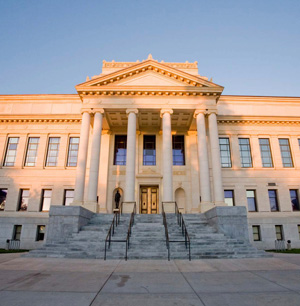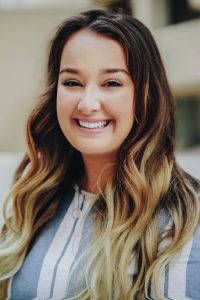University of Utah Administration Holds Virtual Broadcast Addressing COVID-19 Testing, Contact Tracing

The Park Building at the top of President’s Circle, where the U administration works. (Chronicle archives)
August 23, 2020
On Aug. 20, as students made the move to on-campus housing and prepared for classes, the University of Utah administration held a live broadcast about the U’s current testing and tracing plan for COVID-19 for the Fall 2020 semester.
Senior vice president for health sciences, Dr. Michael Good, addressed the state of COVID-19 in the community and how current trends are moving in a favorable direction. According to Good, for every 1,000 individuals in the state of Utah, 2.6 currently have a COVID-19 infection.
He also addressed why the focus is heavily on metrics from the university hospital and the Wasatch Front rather than the national scene if many students will be coming in from various areas around the country.
“One of the things that’s challenging is that the coronavirus is a very regional, geographic-centric illness with different communities being affected in different ways at different times. … We do monitor the national trends and situation, but we do feel the local metrics are the ones that are having the greatest impact on us,” Good said.
Dan Reed, senior vice president for academic affairs, spoke to some of the factors that went into creating a plan for the fall semester, which included ensuring first-time students had a high-quality experience of the U, preserving the experiences that don’t happen in a lecture format and making sure students are able to graduate.
Reed also said the fall schedule was created with the decision to move the majority of classes online, and that these decisions were driven by public health experts both in the state and on campus, including the two-week all-online period of classes mid-semester.
“One of the things that became clear is we could further reduce the probability of spread of infection on campus by instituting a two-week trigger. If you think about the incubation period and the recovery periods, two weeks is kind of a magic interval,” Reed said.
University of Utah Health’s chief medical officer of ambulatory health, Dr. Richard Orlandi, addressed the testing situation, saying the university will be partnering with organizations throughout the community as well as having testing capability on campus.
According to Orlandi, testing is rapidly evolving, and it will look different at the end of the semester in comparison to now.
“Don’t get emotionally tied to anything that we’re doing on day one, because it will change,” Orlandi said.
Contact tracing was covered by Dr. Sharon Talboys, a public health professor who oversees the contact tracing team at the U. According to Talboys, the contact tracing program is working to let people know they may have been exposed to COVID-19 and that they need to monitor themselves for symptoms. It also assists people who may have been exposed to COVID-19 to know how to get tested.
Talboys also addressed the difference between self-isolation and quarantine.
“Isolation is what we ask people to do if they’re actually sick. Quarantine is what we ask people who have been in close contact or have been exposed but are not yet sick or having symptoms, and those timeframes will vary depending on the case and the time of exposure. That’s why it’s important that our contact tracing team gets in touch with you,” Talboys said.
Talboys recommended being aware of your own close contacts, answering your phone if an unknown number calls because it could be from the Department of Health or the University of Utah Health, wearing face coverings and physically distancing.
The importance of using the campus self-report form if experiencing symptoms or testing positive was also emphasized.
U President Ruth Watkins concluded the broadcast by encouraging all to wear face coverings, wash their hands, physical distance and keep their groups small.
“I cannot say strongly enough how grateful I am for this campus and the way you have pulled together to creatively solve problems and prepare for the Fall 2020 semester. … Our goal now is to work together, to stay together. … That will take our faculty, our staff, our students and our behaviors to help us support health and well-being,” Watkins said.
The most up-to-date information regarding COVID-19 and the U can be found at the state of Utah’s COVID-19 website.







